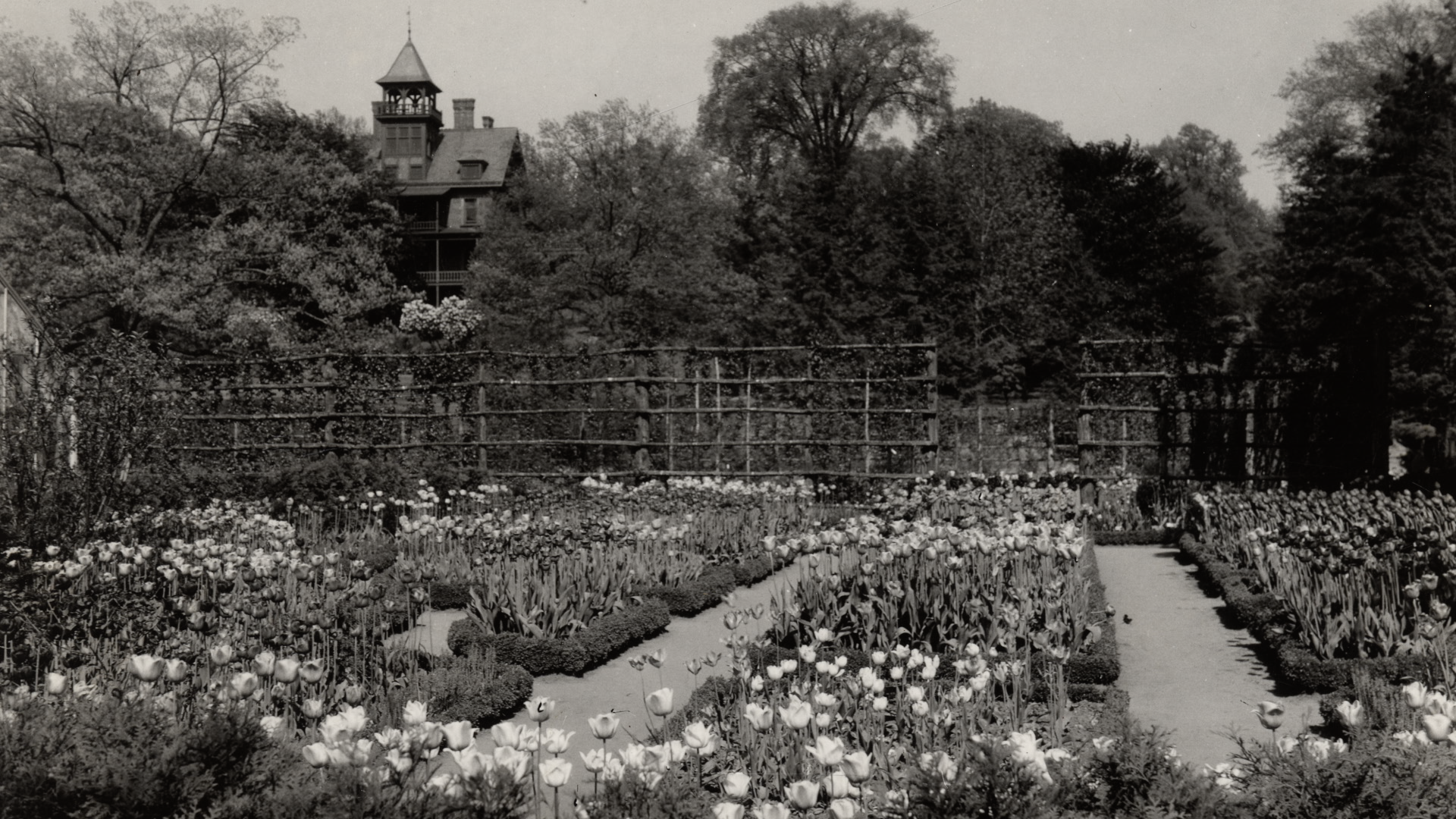Beatrix Farrand: Yale’s Pioneering Landscape Architect
Beatrix Farrand (1872-1959), one of the most important landscape architects of the early 20th century, was Yale’s Consulting Landscape Gardener from the 1920s to the 1940s.
The only woman among the 11 founders of the American Society of Landscape Architects, Farrand designed more than 200 landscapes over her 50-year career, including the landscapes of Yale and Princeton; the East Garden at the White House; the Rose Garden at the New York Botanical Garden; and numerous residential estates, including Dumbarton Oaks in Washington, D.C.
In 1925, Yale awarded Farrand an Honorary Master’s Degree, citing her as “the leading exponent in America of landscape architecture as a profession for women.” In 2014, Farrand was inducted into the Connecticut Women’s Hall of Fame.
Historians credit Farrand with designing three-quarters of the Yale campus landscape, including the interior courtyards of Branford, Saybrook, and Jonathan Edwards colleges; the Sterling Memorial Library courtyard; the grounds of the Divinity School and School of Medicine; and the President’s garden. She also designed the plantings for the extensive “moats” along the foundations of many buildings on campus, creating a linear green parkway. This feature is echoed in the newest residential colleges, Benjamin Franklin and Grace Hopper, built in 2017.
Beginning in the 1920s, Farrand designed and oversaw the implementation of Yale’s Marsh Botanic Gardens, which attracted 10,000 visitors in May and June alone during its heyday in the 1930s. Sited on eight acres between Prospect and Mansfield streets, behind the Forestry School’s Marsh Hall, the botanical garden featured formal tulip and iris display gardens, a systematic teaching garden modeled on the world’s first botanical garden in Padua, Italy, a wildflower garden, an orchard, and a rock garden with more than 1,000 accessioned plant species.
In recent years, there has been a tremendous resurgence of interest in Farrand’s gardens. Numerous books, articles, symposiums, societies, and documentary films have brought renewed focus to her legacy, and many of her commissioned landscapes, including three in Connecticut, have been meticulously restored. While the bulk of her archives are at the University of California, Berkeley, some are here at Yale, including correspondence with her aunt, the novelist Edith Wharton, housed at the Beinecke Library.


